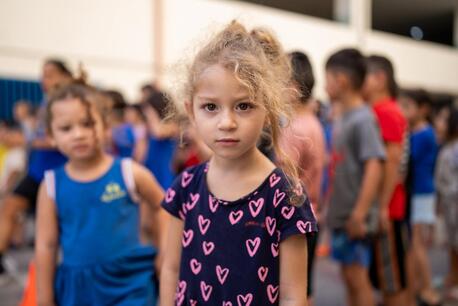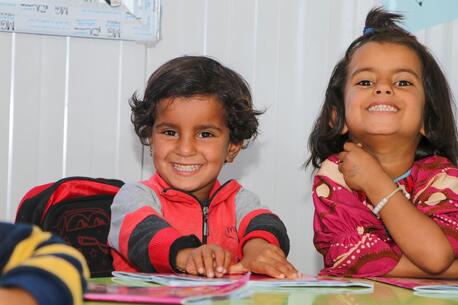
How Syria's Children Endure — Saja Tells Her Story
Meet Saja, 13. She lost her leg in a bomb attack more than two years ago in the Bab Al-Nairab neighborhood in Eastern Aleppo. Her brother was killed in another attack. After being displaced several times, she and her family have settled in the partially destroyed Al-Ashrafieh neighborhood in western Aleppo.
In the video below, Saja reads from an essay she wrote: "I hope that all children who have lost their right to learn will go back to school, especially those who have lost their parents. I hope that children will regain safety and security and live in peace and tranquility."
Saja's four best friends died in the bombing that day. So did her dream of becoming a gymnast. But she has never lost hope. "My school is far away and I get very tired walking there," she said. "It's a struggle, but what else can you do?" Her most precious possession is her artificial leg. Saja has a new dream now: to compete in the Paralympics. Every day, she practices aerial flips in her family's tiny apartment.
Saja was only 7 when the conflict began. Today, nearly 6 million Syrian children depend on humanitarian assistance, a twelve-fold increase from 2012. Over 2.3 million Syrian children are now living as refugees in Turkey, Lebanon, Jordan, Egypt and Iraq. "The depth of suffering is unprecedented," said Geert Cappelaere, UNICEF Regional Director for the Middle East and North Africa.
In a video recorded a year ago when she was only 12, Saja fondly recalls distant memories of a more peaceful past. "My wish for Syria's future is that it goes back to the way it was," she said. "No more war. I hope that we can go out and know that we will come back safely, not go out and never return home. To live like we used to."
HOW TO HELP
There are many ways to make a difference
War, famine, poverty, natural disasters — threats to the world's children keep coming. But UNICEF won't stop working to keep children healthy and safe.
UNICEF works in over 190 countries and territories — more places than any other children's organization. UNICEF has the world's largest humanitarian warehouse and, when disaster strikes, can get supplies almost anywhere within 72 hours. Constantly innovating, always advocating for a better world for children, UNICEF works to ensure that every child can grow up healthy, educated, protected and respected.
Would you like to help give all children the opportunity to reach their full potential? There are many ways to get involved.





